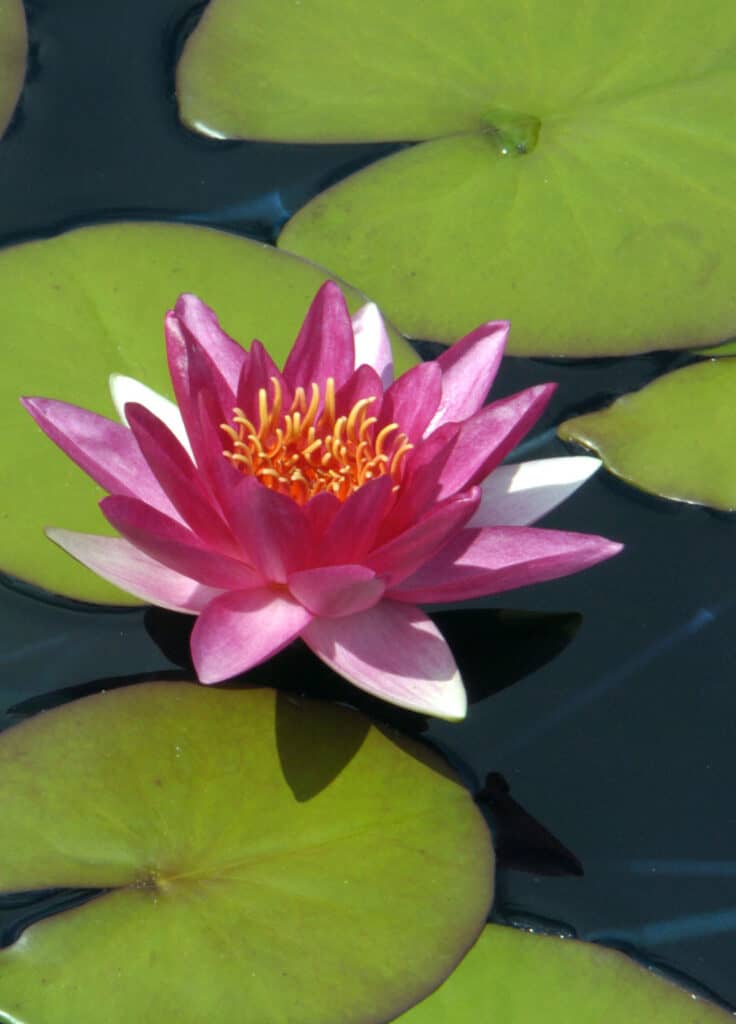
If you’ve ever watched koi in a pond, you may have noticed them nibbling on the waterlilies or hyacinths. Like humans, koi fish are omnivores, meaning they eat both plant and animal material. Therefore you need to take care when installing plants in your koi pond for both the koi and the plants!
Koi fish eat a wide variety of plants, including cooked cabbage, broccoli, carrots, zucchini and pumpkin, lettuce, watermelon, sliced citrus fruit, strawberries, blueberries, and tomato. They will also feed on pond plants such as water lilies, water hyacinth, coontail, water clover, and fairy fern.
Aquatic plants are a valuable addition to a koi pond for various reasons, so you will need to find some suitable to help maintain the pond’s ecosystem. However, some koi enthusiasts don’t like to put any plants in their koi pond because they say they get eaten. Here we look at the plants koi will eat and some they don’t particularly like.
Pro Tip: If you’re tired of wasting money and making costly mistakes on the koi-keeping hobby or are thinking about buying koi fish but don’t know where to start, I strongly suggest you check out this ebook. I recently read this ebook, and it contains SO much useful information, such as:
- 3 proven steps to identify koi fish diseases
- WARNING: 3 things you should NEVER do when it comes to caring for koi
- When to seek professional help when it comes to looking after your koi
What Plants Do Koi Like To Eat?
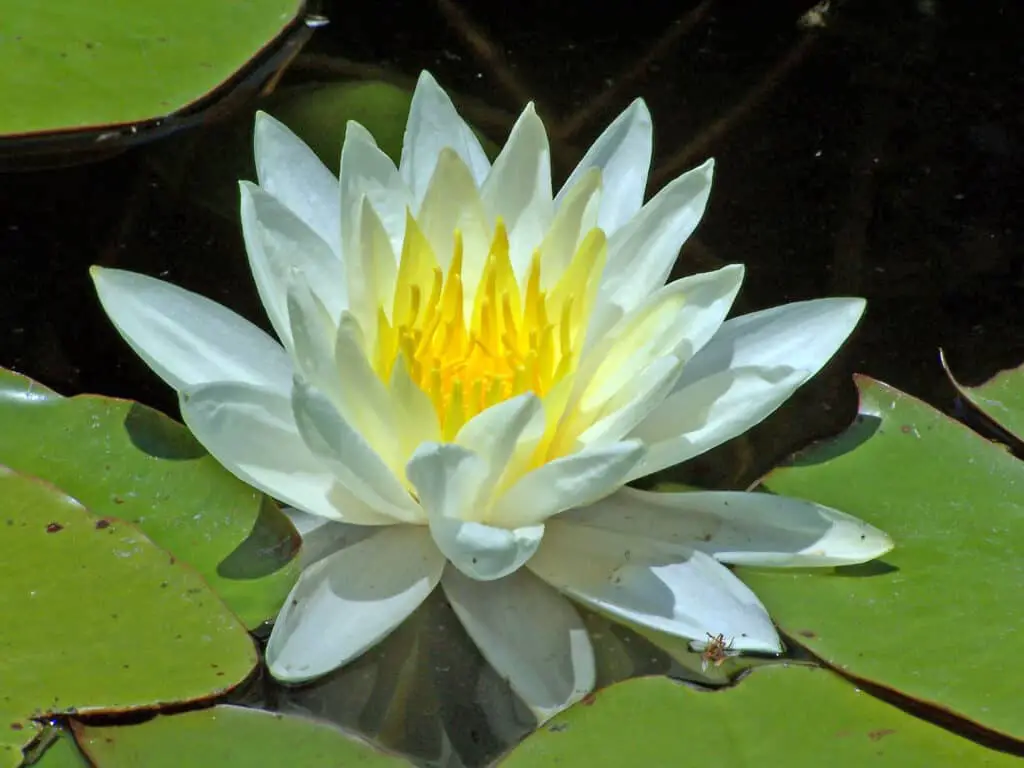
Koi fish are browsers and very inquisitive about new things in their environment. In the wild, they have a mixed diet of algae, plants, worms, snails, fish fry, tadpoles, insect larvae, seeds, and the small crustaceans they find on the bottom of the pond.
Usually, koi prefer protein foods, such as insects and small creatures. However, they are opportunistic feeders and will eat algae, seeds, and plants when protein is scarce.
Technically, koi are known as benthic feeders. They eat whatever foods they find in the sediments at the bottom of the pond. However, domesticated fish have also learned to grab food from the water’s surface. This makes feeding them koi pellets a breeze.
In captivity, they especially like to nibble the tender roots of bottom-anchored plants like water lilies and coontail. Still, they are not fussy and will eat many other aquatic plants such as water lettuce and water hyacinth.
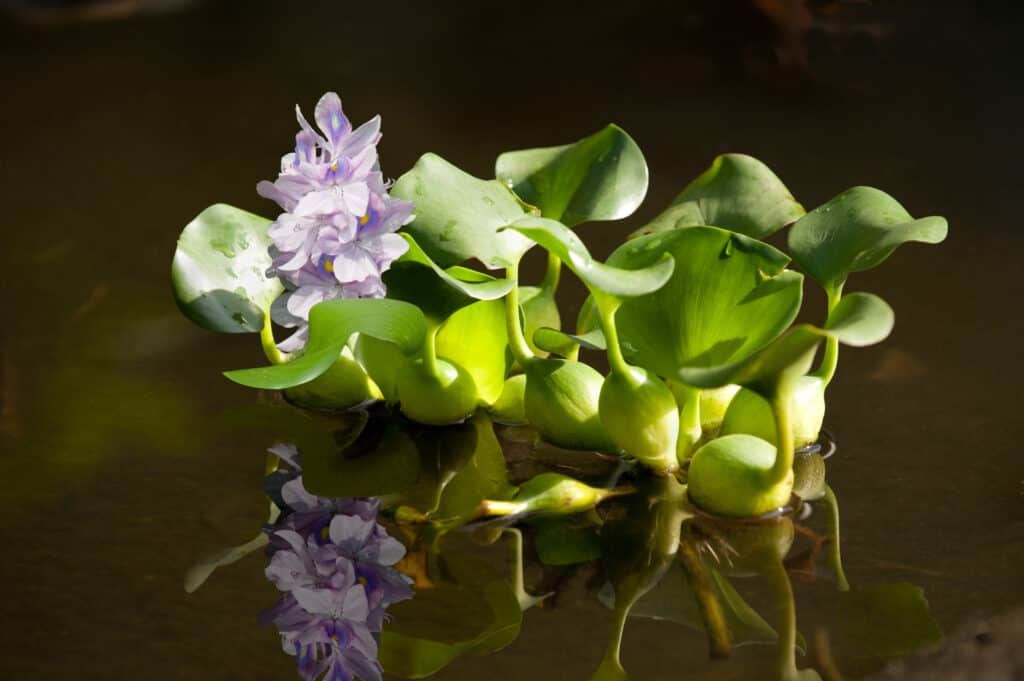
Several plants may be used in a koi pond, but they can be broken into three categories. Koi will nibble on all of them if they are hungry. The three categories are –
- floating surface plants like water clover, water shield, and fairy fern, otherwise known as Pacific mosquito fern
- submerged plants like waterweed, coontail, and water smartweed, which take root at the bottom of the pond
- emergent plants such as lotus and lilies that are visible above water but have roots below the surface
Some koi keepers feed their fish lettuce, cooked vegetables like pumpkin, broccoli, cabbage, carrots, and green peas, low carb fruits like sliced citrus, watermelon, apples, blueberries, and strawberries as treats. It takes them a little while to try these plant foods, but koi are big eaters, and once they discover them, they become firm favorites. Koi also like garlic, zucchini, cucumber, and tomato.
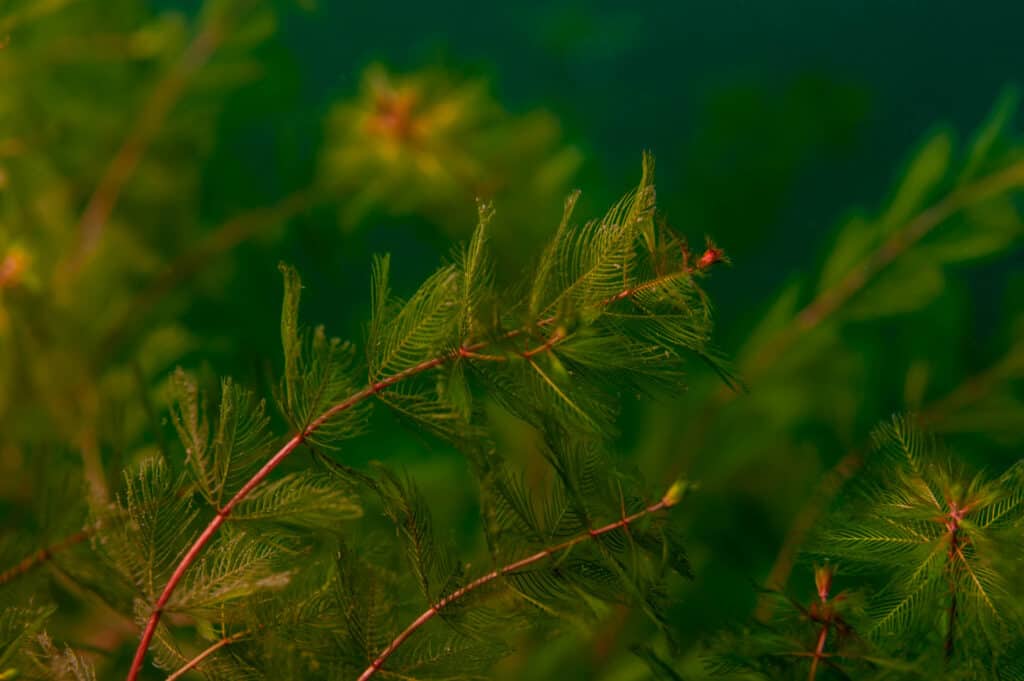
How To Stop Koi Eating Pond Plants
To stop koi from eating the roots of pond plants, it is best to place them in a pot filled with rocks. Also, koi are less likely to eat these plants if they are kept well fed on other things. Satisfy their need for greens with treats such as lettuce, cooked and shelled peas, or cooked broccoli or cabbage.
If your pond is well-populated with aquatic plants before introducing the koi, they are unlikely to do much damage. If you introduce plants to an already established koi pond for the first time, it’s advisable to add a large number rather than just a couple. This divides the koi’s attention between the plants, making them less likely to be destroyed.
What Plants Do Koi Fish Not Eat?
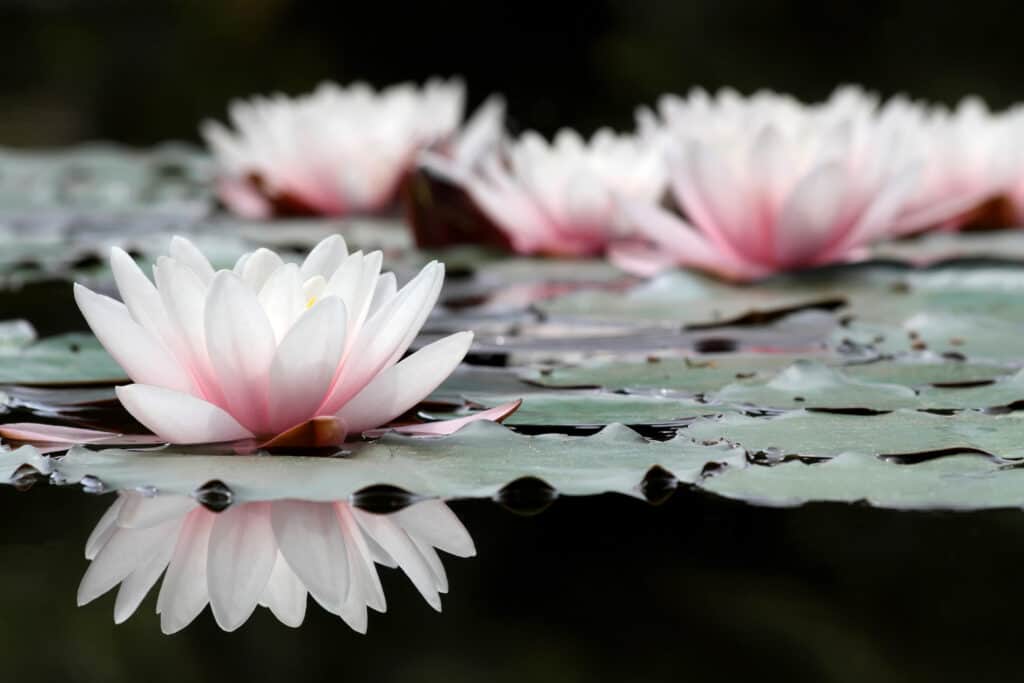
Some say koi won’t go for water lettuce, the lotus plant, umbrella plant, or water poppy. However, these plants have their downsides. For instance, while beautiful and sometimes confused with the water lily, the lotus is highly invasive and spreads fast if not kept in check. On the upside, it is likely to survive being nibbled on by koi because it is so prolific.
Water lettuce is categorized as a weed and forms large floating colonies that quickly crowd out other plants. These colonies can interfere with the gaseous exchange between the water and the air if too dense. Water lettuce produces small, unassuming yellow flowers.
Water poppies are attractive floating plants whose flowers only last a day, producing them throughout the summer. The umbrella plant from the sedge family is low maintenance and fast-growing and looks good among water lilies. They can grow in water no more than 6 inches deep, but they are invasive and have deep roots, which could be a problem.
If the koi are hungry, they may still nibble on these plants but generally prefer more palatable food, so the trick is to keep them well-fed. To keep koi from eating the tender roots of plants like water lilies, it is advisable to plant them in pots filled with rocks before submerging them.
The Vital Role Of Plants In A Koi Pond
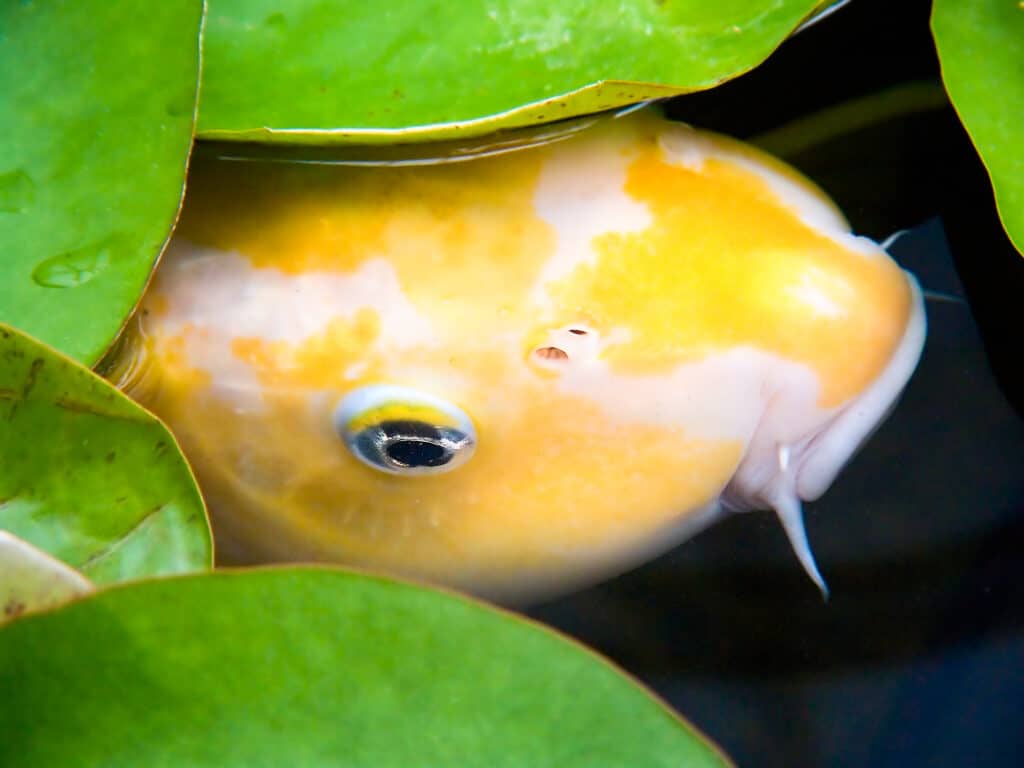
The role of plants in a pond is not just to serve as fish food! They oxygenate the water, absorb excess nutrients and harmful chemicals, filter the water and deter the overgrowth of algae. Plants also provide shelter for the other pond residents, such as snails, frogs and tadpoles, insects, and insect larvae. Koi relish these as sources of protein.
Pond surface plants provide shade for the fish and keep the water cool in summer. Female koi will happily affix their eggs to the undersides of broad-leaved aquatic plants.
A small, shallower koi pond should have approximately seventy percent of its surface covered by plants to provide shade and keep the water cool enough in summer. Deeper, larger ponds don’t need as many plants because the water is cooler at the deeper levels and also provides shade.
Algae needs light to flourish, so keeping a sufficient shade over the pond’s surface impedes its growth. The koi also feed on the algae, but algal overgrowth is undesirable as it upsets the chemical balance in the water.
Plants To Avoid With A Koi Pond
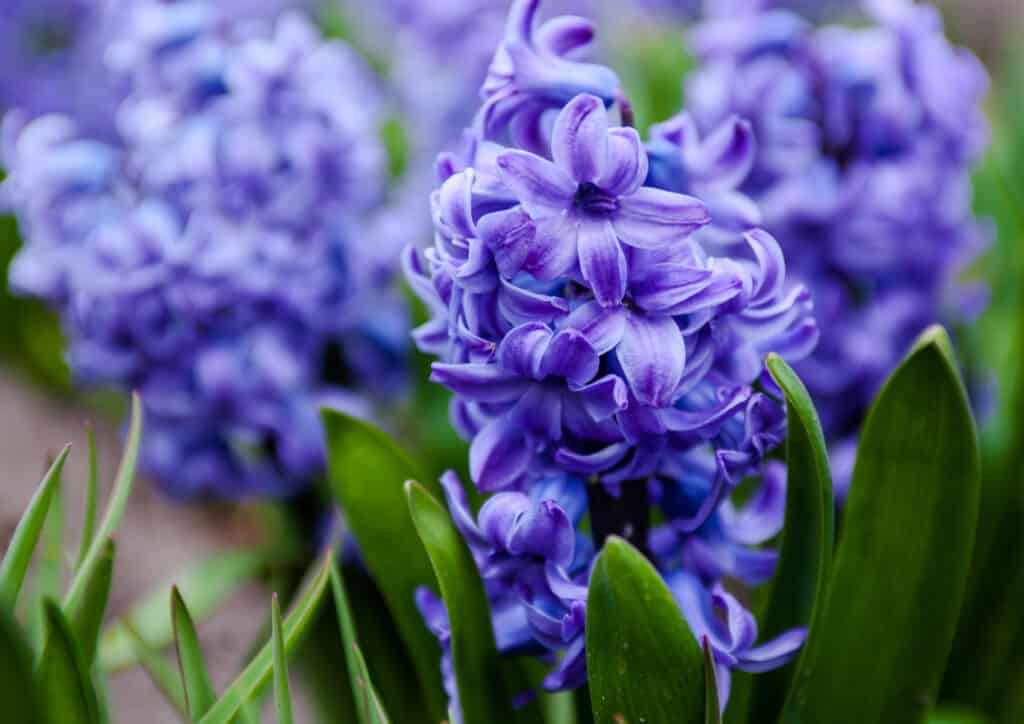
You don’t want to use plants that can harm your fish! Rather let them nibble on your pond plants and thrive than use plants that are toxic or damaging to the ecosystem. Too many aquatic plants can deplete the oxygen in a pond, so don’t overdo it. You also need to think about toxic plants surrounding the pond whose leaves and flowers may drop into it.
There is an essential distinction between water hyacinth and hyacinth, the latter being poisonous. Koi frequently nibble on water hyacinth, but the other kind of hyacinth could be harmful to them. Fortunately, this last grows from a bulb on land, so you should avoid planting it around the koi pond. Water iris sap is also reportedly poisonous to koi.
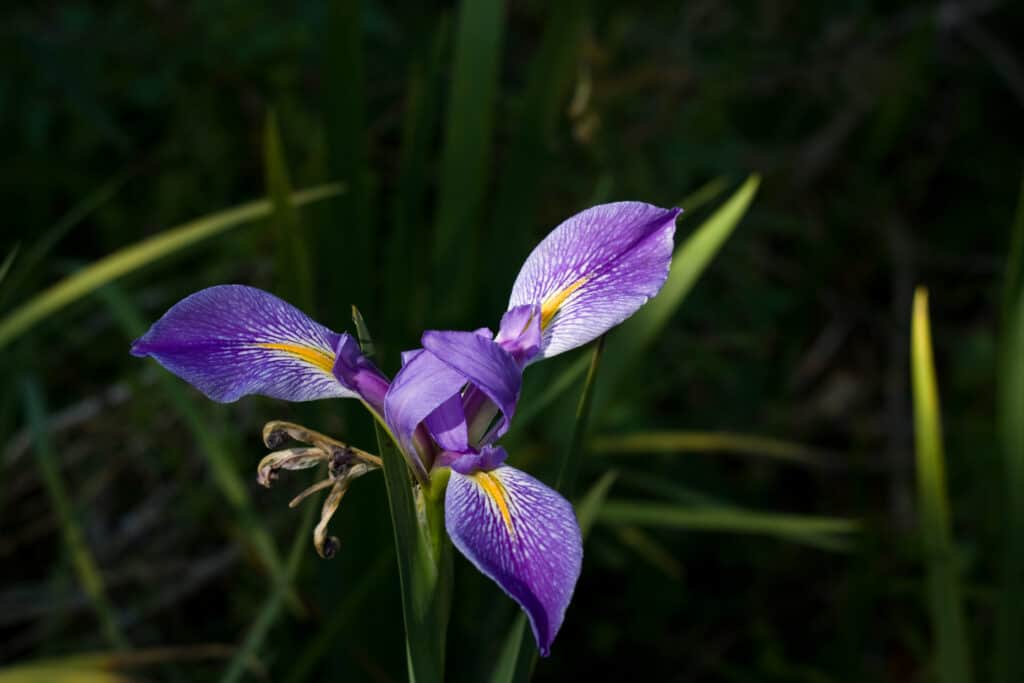
Plants such as Cardinal flower or lobelia cardinalis, Taro or elephant ear, and Calla lily are allegedly poisonous to fish. The fish will avoid them as they are unpalatable, but caution is the best policy for keeping expensive koi.
Conclusion
Koi fish eat many different kinds of plants in addition to protein because they are omnivores like us. You can expect them to nibble on aquatic plants in their pond, especially if they are hungry. If you add these plants in sufficient numbers and feed your koi a variety of plant treats in addition to their pellets, they are unlikely to decimate your pond plants.

